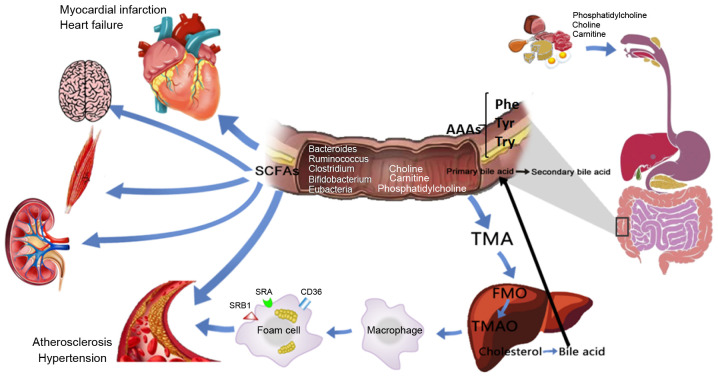Figure 4.
Potential role and mechanism of action of gut microbiota metabolites in CVD development. Dietary choline, phosphatidylcholine and carnitine produce TMA through decay and metabolism of the intestinal flora, and the absorbed TMA reaches the liver and is oxidized by FMO3 to form TMAO, which stimulates macrophages to upregulate scavenger receptors (such as CD36, SRA and SRB1), resulting in foam cell formation and accelerating the progression of chronic vascular inflammation, such as atherosclerosis. BAs enter the enterohepatic circulation through the intestinal flora and related enzymes. SCFAs are important for maintaining the normal function of the large intestine and the morphology and function of colonic epithelial cells. They can also promote the absorption of sodium and the aggregation of bacteria. Dietary proteins are metabolized by intestinal flora to produce AAAs, including Phe, Tyr and Trp, which participate in various metabolic processes. CVDs, cardiovascular diseases; TMA, trimethylamine; TMAO, trimethylamine N-oxide; FMO3, flavin monooxygenase 3; SCFAs, short-chain fatty acids; AAAs, aromatic amino acids; BAs, bile acids; Phe, phenylalanine; Trp, tryptophan; Tyr, tyrosine.

